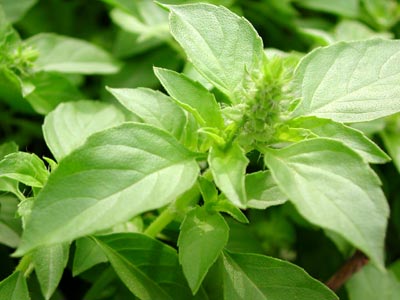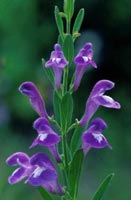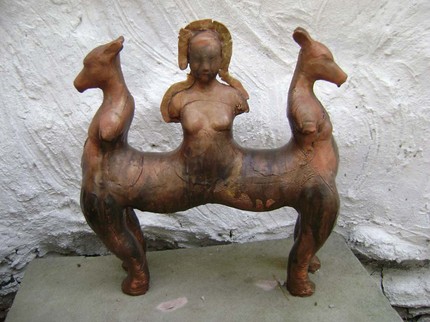Yes, but let me tell you how. MRSA (Methicillin-resistant Staphylococcus Aureus) is a bacterial infection that is highly resistant to some antibiotics. Staph infections cause redness, inflammation, tenderness, sometimes oozing pus, possible skin abscess, and fever. MRSA has appeared often in the news recently because of a significant increase in the numbers of MRSA infections. Because severe MRSA infections can even lead to death, it’s very important to take MRSA infections seriously and to use whatever antibiotics are available. That said, stubborn MRSA infections may need the addition of helpful herbs to do several things: 1) potentiate (increase the efficacy of) the conventional antibiotics, 2) concurrently fight infection by immune system stimulation or antibiotic action, and 3) preventing the formation of biofilms.
In a nutshell, all organisms have ways of eliminating toxins. For bacteria and cancer cells, cellular efflux pumps help reduce cellular concentrations of antibiotics, chemotherapeutic agents, or environmental poisons. Some efflux pumps are known as multiple drug resistant (MDR) pumps, which reduce cellular concentrations of the very “medicines” we use to fight them (by way of chemo or antibiotics), and thus reduce their efficacy. Bacteria can “learn” resistance, which can be passed down to later generations, and resistant bacteria include MRSA, Escherichia coli, Salmonella typhimurium, and others. (Thank you, David Winston). In recent history, most MRSA infections have been transmitted via healthcare settings, but recently this trend appears to be changing. For one thing, the prophylactic and over-use of antibiotics contributes to the development of multi-drug resistant bacterial strains, as does the common practice of patients’ not completing a full cycle of antibiotics, allowing bacteria the ability to mutate, change, and become resistant to many conventional antibiotics.
Earlier I referred to biofilms. Biofilms are another survival strategy that help some (Persister) bacteria survive toxic medications. In this case, the resistance traits are not passed on to further generations, but persisters create bacterial colonies that produce biofilms, or slimy films that form a protective barrier against toxins. A few studies have demonstrated that some herbs, such as catnip, have the ability to break down biofilms, thus allowing the antibiotics to work better against the infection.
Honey and clay, as mentioned in earlier posts, have a long history of topical use for skin infections. French green clay has been shown to have specific activity against MRSA (Williams 2007), and Manuka honey from New Zealand has been found to be an effective topical remedy for MRSA (AP, 2007).
There are many herbs that can be used against MRSA, and I have chosen a selection of those herbs for this post. If you have questions about where to find extracts or how to create a formula, please let me know! As for the herbal remedies, it is important to note that some herbs A) inhibit the MDR pumps, discussed above, some B) inhibit or kill MRSA and other antibiotic resistant bacteria, and some C) enhance antibiotic activity in one way or another. It would be wise, therefore, to create a formula drawing from these three different groups, so as to best supplement conventional antibiotics. Even better would be to consult with a trained herbalist who can take into consideration the full spectrum of your health, potential for drug interactions or contraindications, depending on what pharmaceutical drugs you may be on or additional health conditions you may have. One can additionally create topical salves with antibiotic, vulnerary herbs and essential oils to further treat a skin infection, and these generally have no containdications except for allergic reactions (albeit rarely).
Category A: herbs that appear to inhibit MDR pumpsBarberry Root & leaf (berberis spp.), Coptis Root (coptis chinensis), Goldenseal Root (hydrastis canadensis), and Oregon Grape Root (mahonia aquifolium, M. repens) ~ berberine containing herbs can work together with berberine extract to both reduce biofilms, inhibit MRSA, and inhibit MDR pumps. It does appear that a standardized berberine extract should be used along with alcohol extract of the whole herb, and both are less effective when used alone. (Stermitz, et al, 2000)
Thyme (thymus vulgaris): baicalein (also see Baical scullcap, below), a flavone found in the leaves of this herb, is believed to inhibit several different MDR pumps as well as possibly damage the integrity of bacterial cell walls. When used with antibiotics, this flavonoid increased the efficacy of the drugs needed to kill MRSA (Stavri et al 2007). Thyme’s essential oils are also considered antibiotic, and thymol, in particular, is a well-known disinfectant, antibacterial, antibiotic, and antiviral agent that makes thyme oil a wonderful addition to topical salves used to treat MRSA.
Garlic bulb (allium sativum) ~ ah yes, beloved garlic; creates inhibitory synergy with antibiotics; effective (in-vitro) for many resistant bacterial infections. (Abascal & Yarnell, 2002)
Category B: Inhibit or kill MRSA and other resistant bacteria
Andrographis (Andrographis paniculata): in vitro research indicates that water extracts (infusion/decoction) have significant inhibitory activity towards MRSA. Traditionally used in Chinese and Ayurvedic medical systems for treating viral and bacterial infections, this herb has a long track record of use against flus and bacterial infections.
Catnip (nepata cataria): this common mint inhibited MRSA and reduced bacterial adherence by helping prevent the formation of biofilm in studies (Nostro, A. et al 2001)
Elecampane root (inula helenium): in vitro studies indicate that elecampane strongly inhibits over 300 strains of S. aureus, including MRSA (O’Shea 2007). I learn from David Winston, master herbalist, that the eclectics (nineteenth century Western herbalists) used Inula to treat tuberculosis, along with Echinacea, and it has been effective in treating antibiotic resistant pneumonia and viral or bacterial bronchitis.
Holy Basil/ Tulsi (Ocimum sanctum): an aromatic adaptogen that has shown signficant in-vitro inhibitatory activity against three strains of MRSA (Aqil, et al, 2005). Long used in Ayurvedic medicine for its antibacterial essential oils to treat bacterial and viral diseases. Microbial endocrinology also shows us that reducing cortisol (stress hormone) levels can also help prevent and resolve illness, as well. Tulsi is an amazing herb that will be highlighted in an upcoming post — my readers simply have to know more about this herb!
St. John’s Wort (hypericum perforatum): long noted for its antidepressant effects, SJW’s powerful antibacterial activity is often overlooked. The alcohol extract of fresh flowering tops can be used internally to treat viral and bacterial conditions, and in this case, has shown activity against MRSA (Abascal & Yarnell 2002). Additionally, an infused oil is used topically for painful infections and nerve pain.
Tea Tree (Melaleuca alternifolia) essential oil: this powerful essential oil, used to treat all manner of skin conditions, has also shown to inhibit MRSA (LaPlante 2007) and was superior to chlorhexidine or silver sulfadiazine at clearing topical MRSA infections (Dryden et al 2004). Tea tree is already widely used for treating topical infections, burns, boils, etc, and makes a fabulous addition to handmade medicinal salves.
Category C: Enhance activity of conventional antibiotic medicinesBaical Scullcap/ Huang Qin root (scutellaria baicalensis) or other scutellaria species, including S. lateriflora and S. galericulata: appears to assist antibiotics in their efficacy by enhancing bacteriocidal activity. This herb is commonly used in Chinese medicine for damp/heat infections such as infectious hepatitis, dysentery, tonsilitis, and bacterial infections with high fevers, and thus has a long use (Huang Qin) of use against such infectious conditions. Studies have shown it improves activity of 4 different antibiotics against 4 different strains of MRSA (Yang et al, 2005)
Sage (Salvia officinalis): sage extracts strongly potentiate gentamicin and other aminoglycosides in treating resistant strains (Horluchi et al 2007). Sage tea is effective for treating sore throats and is used for gastric ulcers.
Turmeric root (curcuma longa): extracts of turmeric have demonstrated ability to decrease MRSA effectiveness, acts as an antibacterial agent, and enhanced the effectiveness of beta-lactam antibiotics against MRSA (Kim et al 2005). Curcumin extracted from Turmeric strongly inhibits virulence factors, including biofilm production (Rudrappa & Bais 2008). Turmeric is used in Ayurvedic medicine for treating gastric conditions, infectious hepatitis, and topically for infected lacerations. Turmeric is a powerful anti-inflammatory and quite possibly one of the top 25 herbs that no herbalist should be without. Because I live in an urban environment and can’t grow my own, I have fresh turmeric shipped to me from an organic farm in Oregon, Pacific Botanicals, so I can make my own alcohol tinctured extracts.
Uva Ursi (Arctostaphylos uva-ursi) : corilagin, a polyphenol isolated from uva ursi, has had significant ability to enhance antibiotics by reducing the MIC (minimum inhibitory concentration) of beta-lactam antibiotics needed to treat MRSA (Shiota et al 2004). This is a herb frequently used for urinary tract issues and should not be taken continuously for long-term use, but is perfectly safe when taken in 2 week intervals.
Keep in mind that the above represents just a few choice herbs and that a larger range of herbs have been studied for effectiveness against drug resistant bacterium. These herbs, however, are readily available and commonly used for similar conditions, so they should be easy to find. A reputable source, and my first choice, for alcohol extracts is Herbalist & Alchemist ( www.herbalist-alchemist.com), the company connected to herbalist David Winston, from whom I learned about most of these important studies.
References (full refs available upon request):
AP, 2007
Abascal & Yarnell, 2002
Dryden et al 2004
Horluchi et al 2007
Kim et al 2005
LaPlante 2007
Nostro, A. et al 2001
O’Shea 2007
Shiota et al 2004
Stermitz, et al 2000
Stavri et al 2007
Williams, 2007
Yang, et al 2005






 Posted by lilithsapothecary
Posted by lilithsapothecary 

